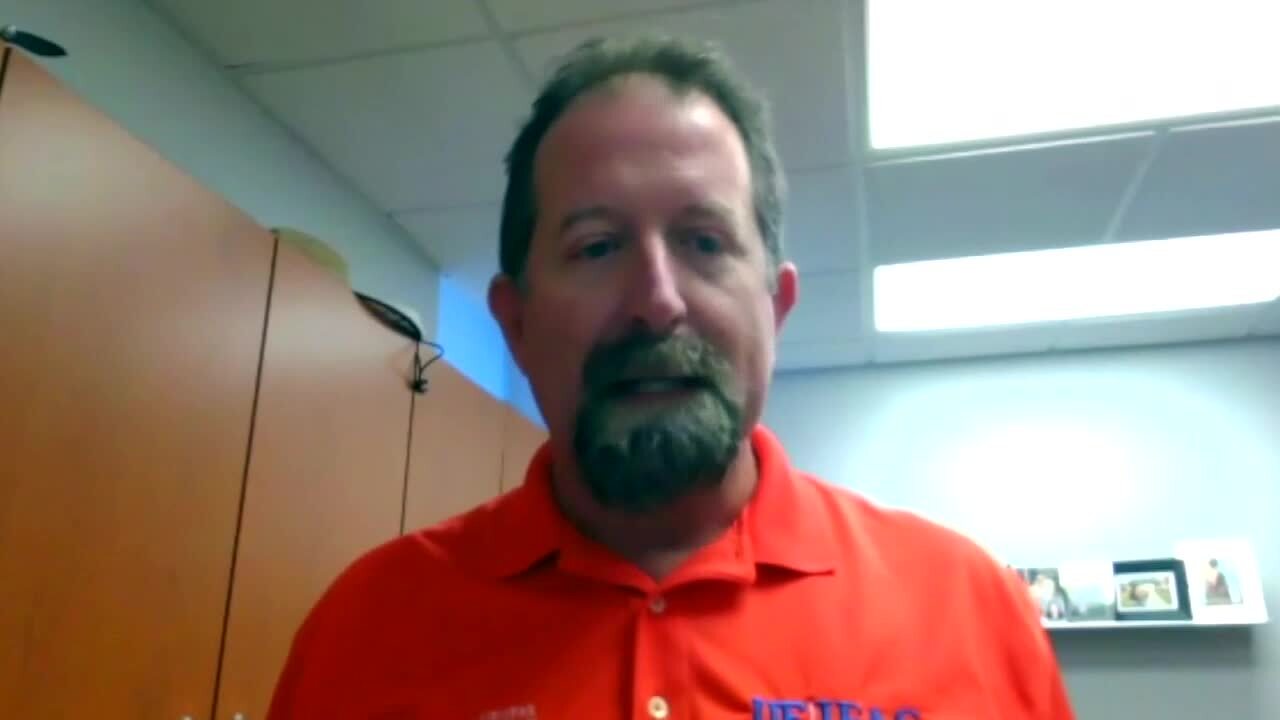PALM BEACH COUNTY, Fla. — A grass-killing virus is spreading throughout communities and experts said it’s the worst Palm Beach County has seen in years.
Joel Raine started noticing it in his community of Forest Lakes a few months ago. He thought it was chinch bugs.
"It looks like chinch bugs are at it," he said.
Raine decided to call pest control. However, pest control determined it was something else.
"Chinch bugs looks different, it looks more like you poured fuel all over the lawn," said Alex O’Hara.

O’Hara is the president of O’Hara Pest Control Incorporated. He said he’s flooded with similar calls from homeowners all over Palm Beach County— trying to determine if it's a fungus or bugs killing their lawns. It's neither.
"When you open up a leaf blade that’s infected and it looks like a mosaic painting," O'Hara said.
It's called lethal viral necrosis. The virus starts out with pockets of dead grass until lawns go fully brown, turning sod to dirt.
"Once it's in a community, the mowers are pretty efficient at picking it up from where it's introduced and then spreading it locally from lawn to lawn," said University of Florida plant pathologist Dr. Phillip Harmon.

Harmon said the virus was once referred to as sugarcane mosaic virus. It has been around for decades but never caused this kind of damage, until recent years.
"We think that this virus has changed and a new variant has come about that has allowed it to kill one of our most popular and one of the best lawn grasses that we use in Florida," he said.
Dr. Harmon said 80% of Florida lawns are Floratam St. Augustine sod — the most susceptible to the virus.
"In December it can get really bad," O’Hara said.
Another mystery from the virus still being researched is why the disease is most severe in the cooler months.

There is no treatment for lethal viral necrosis. The only way to cure your lawn is to replace the sod with one that is resistant to the virus.
O’Hara said homeowners can replace the dead spots with CitraBlue or BitterBlue St. Augustine sod. Over time, the new grass spreads where the other is dying, avoiding having to re-sod the entire lawn.
"There's 228 units in here, we have a lot of grass that would have to be replaced," said Raine.
Raine sits on the homeowner association board and said it is costly just to replace a portion outside the community tennis court with a type of grass resistant to the virus.
"Two thousand dollars worth of grass," he said.
He's been watching the grass around his home and is just relieved the HOA is getting ahead of it now," he said.

"If we don’t take care of it now, there would be a large impact on people, because you would have to do an assessment and it would be a huge amount of money," said Raine.
Harmon said if your lawn is dying now, it was likely infected two to three years ago.
He said several HOA communities in southern Palm Beach County are seeing major damage due to the virus now.
In early August, the Valencia Reserve Homeowners Association filed a lawsuit against its insurance company for denying a claim related to damages caused by sugarcane mosaic virus.
The HOA sought more than $30,000 in damages.




